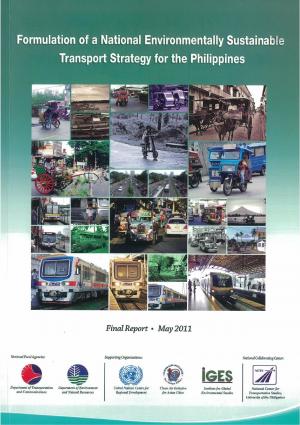Economical Transit Advertising Philippines for Brand Name Awareness
Economical Transit Advertising Philippines for Brand Name Awareness
Blog Article
Understanding the Function of Transportation Marketing in Enhancing Brand Name Visibility and Customer Engagement
Transit advertising and marketing has become a critical component in the marketing landscape, using unique chances for brand names to elevate their exposure and involve consumers efficiently. With the capacity to get to a diverse and captive audience during their day-to-day commutes, these advertising methods are not just about exposure; they are regarding developing meaningful connections with prospective consumers. As we explore the multifaceted benefits and ingenious strategies within transportation advertising, it ends up being important to think about how these aspects jointly affect customer assumption and actions, raising questions about their long-lasting effect on brand loyalty.
Meaning of Transportation Marketing
Transit advertising refers to the technique of advertising items, services, or brands via promotions positioned around mass transit systems. This form of advertising encompasses a selection of positionings, including posters on buses and trains, electronic displays at transit stations, and covers on the exterior of cars. It aims to get to a diverse audience, maximizing the high foot website traffic linked with public transit.
Transit advertising and marketing is purposefully placed to capture the focus of travelers, who typically spend substantial time waiting or traveling. By integrating ads into the day-to-day routines of people, brand names can create a long-term perception and foster brand name recognition. The tool is especially effective in metropolitan environments, where public transport is a main setting of travel.
In addition, transit advertising can promote localized targeting, permitting companies to get to particular demographics based upon transit paths and terminal locations. As metropolitan populations grow and the usage of public transport boosts, this advertising and marketing technique has actually gained importance as a vital element of incorporated advertising techniques. The vibrant nature of transportation advertising, integrated with its capacity to engage consumers in a restricted setting, underscores its relevance in modern marketing methods.
Advantages of Transportation Advertising
The efficiency of transit advertising and marketing depends on its ability to deliver a wide variety of advantages to brand names looking for to enhance visibility and interaction. Among the main benefits is the considerable reach it offers; transit advertisements can effectively target diverse demographics across urban areas, reaching both commuters and pedestrians alike. This wide direct exposure significantly increases brand name awareness.
One more benefit is the high regularity of perceptions. As transportation lorries follow well-known courses and quit at numerous places, they produce repeated exposure that strengthens brand messages. This frequency fosters knowledge, which is essential in consumer decision-making.
Transit advertising and marketing is also cost-efficient compared to other media platforms. Provided its large reach and potential for high impressions, brand names usually experience a reduced expense per thousand perceptions (CPM), maximizing their advertising spending plan.
In addition, transit ads can develop a feeling of neighborhood connection. By straightening with regional transit systems, brand names can reverberate with regional target markets and promote a sense of neighborhood satisfaction. This localized strategy improves brand commitment and interaction, making transit advertising and marketing a compelling choice for services aiming to strengthen their existence on the market.

Efficient Strategies for Transportation Campaigns
To maximize the influence of transit projects, brands need to take advantage of tactical preparation and execution tailored to their target market. Initially, recognizing the market characteristics of the audience making use of public transit is critical. This enables brand names to create individualized messaging that resonates with prospective consumers.
Next, picking the right transit tools is important. Whether making use of bus wraps, train posters, or electronic displays, each medium has special benefits that can enhance exposure. As an example, dynamic visuals on bus covers can stand out, while digital advertisements can be upgraded frequently to show prompt promos.
Moreover, incorporating a natural branding strategy across transportation systems ensures consistency and enhances the brand name's identification. Utilizing memorable taglines and captivating layouts will certainly enhance brand recall among commuters.
Finally, timing is a vital consider performing effective transportation campaigns. Releasing projects throughout peak travel hours or regional events can substantially boost presence and involvement. By using these approaches, brand names can properly harness the possibility of transportation advertising and marketing, cultivating higher understanding and connection with their target audience. Ultimately, a well-executed transit project can drive significant development in brand exposure and consumer engagement.

Determining Impact and Engagement
In evaluating the performance of transit marketing campaign, precise dimension of influence and interaction is important for brand names seeking to optimize their advertising and marketing methods. Metrics such as reach, frequency, and impacts offer foundational information to assess presence. Examining these factors aids identify the number of potential consumers are exposed to the promotions during their day-to-day commutes.
Engagement can be more evaluated via consumer communications, such as site web traffic, social media points out, and straight reactions to calls-to-action included in the ads. Making use of tools like QR codes or special Links can help with monitoring of consumer habits straight linked to transit projects. Studies and comments devices also serve as beneficial methods to gather qualitative information on customer perceptions and recall of the ad.
In addition, advanced analytics and acknowledgment versions can correlate transportation direct exposure with succeeding acquiring actions, supplying insights into the roi. By using a detailed strategy that integrates measurable and qualitative measures, brand names can create a nuanced understanding of their transit advertising and marketing influence. Ultimately, this data-driven strategy allows brand names to improve their projects, guaranteeing they reverberate effectively with target audiences and enhance overall brand visibility.
Situation Research Studies of Successful Campaigns
Successful transit marketing campaigns look at here now serve as compelling examples of just how reliable approaches can boost brand name presence and involvement. Transit Advertising Philippines. One significant situation is the "I Love New york city" project, which changed the city's picture and drew in millions of travelers. By utilizing subway advertisements, signboards, and bus wraps, the campaign created Look At This a solid, natural brand identity, leading to a considerable uptick in tourism and local organization patronage
An additional exemplary campaign is Coca-Cola's "Share a Coke" campaign, which leveraged transportation marketing to personalize the brand name experience. By including popular names on promotional products across various transportation platforms, Coca-Cola fostered a much deeper emotional connection with customers, encouraging them to share their experiences on social media sites.
In addition, the "Got Milk?" campaign properly used public transport advertisements to reach a broad target market, strengthening the message of the importance of milk in a well balanced diet plan. The project saw a measurable increase in milk intake in target demographics.
These study show that when performed attentively, transit marketing can significantly boost brand presence, foster consumer interaction, and drive measurable outcomes, demonstrating its crucial role in modern-day advertising approaches. - Transit Advertising Philippines
Final Thought
In verdict, transportation advertising and marketing offers as a vital tool for enhancing brand visibility and fostering consumer engagement. Ultimately, the ability to measure involvement and analyze effective instance researches emphasizes the performance of transportation marketing in driving brand loyalty and consumer interactions.
Transportation advertising and marketing has actually arised as a crucial component in the advertising landscape, using special chances for brands to raise their straight from the source presence and engage customers successfully.Furthermore, transit advertising can facilitate local targeting, enabling companies to reach details demographics based on transportation routes and terminal places.In assessing the effectiveness of transportation marketing campaigns, exact dimension of impact and involvement is crucial for brand names seeking to maximize their marketing strategies.Effective transit advertising and marketing campaigns offer as compelling instances of exactly how effective methods can elevate brand name visibility and involvement.In final thought, transportation marketing offers as an important device for improving brand name exposure and cultivating consumer involvement.
Report this page